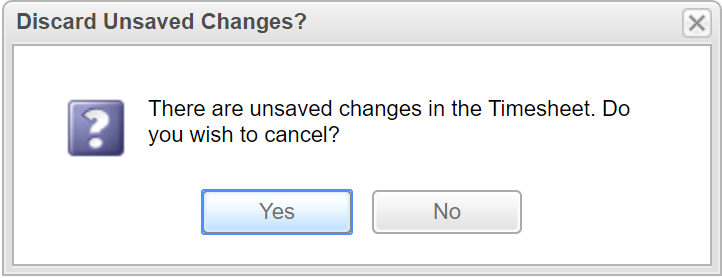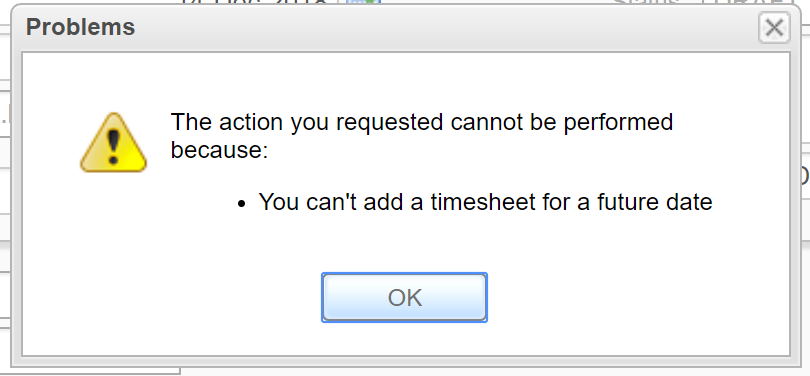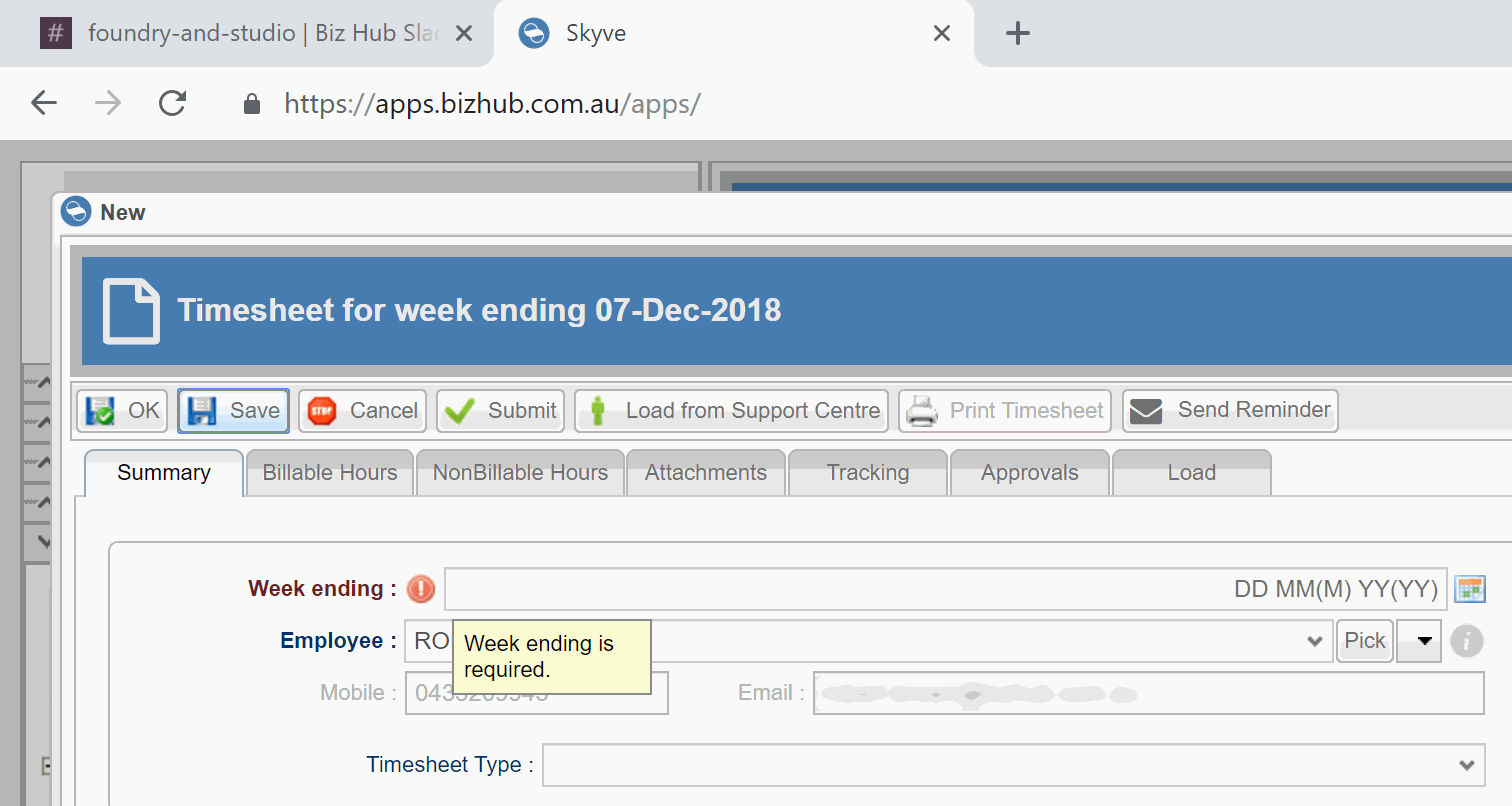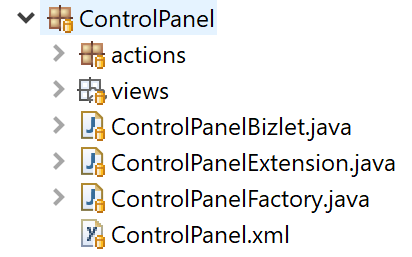Bizlet and extension classes
Bizlets
A Bizlet is a class related to a document which extends default bean behaviours and extends org.skyve.metadata.model.document.Bizlet
Bizlets can reference other classes without restriction and may be the point of connection to highly specific application code.
The intention of the Bizlet is to contain only code relevant and contextualised to a specific document, and so Bizlet classes are located within the document package. Cross-document code or module-level code should be included in a class created at the module level or higher.

Bizlet classes only contain the minimum required code and methods, e.g. only the necessary overrides. No code is required (in fact no Bizlet class is required) for generic or default behaviour.
A Bizlet class may override bean-lifecycle methods.

Lifecycle
Lifecycle event timing is as follows:
Bean level lifecycle
| Event | Description |
|---|---|
| newInstance() | called after instantiation through the document.newInstance()The newInstance() method is commonly overridden to set application default values for the document.If an exception occurs the bean will not be instantiated. |
| postLoad() | called after instantiation and population of data store values The postLoad() method can be called to recalculate values which are visible in a document list or detail view.If an exception occurs, the associated view will open with an error dialog. |
| preSave() | called before flushing the values to the data store or User press of [Save] button (before document validation) The preSave() method can be overridden to ensure application rules or calculated fields are up to date before the bean is persisted.If an exception occurs at this stage, the transaction will roll back and the change will not be saved. |
| validate() | called after preSave() (and after document validation) but before flushing the values to the data storeThe validate() method is commonly overridden to include additional complex document validation (other than implicit validation of requiredness etc.).If an exception occurs at this stage, the transaction will roll back and changes will not be saved. |
| postSave() | called after flushing values to the data store and after all integrity and validation checks have been performed The postSave() method might be overridden to perform an action only on a successful save of the bean, e.g. to send a confirmation email.If an exception occurs at this stage, the transaction will roll back and changes will not be saved. |
| preDelete() | called before deletion from the data store The preDelete() method might be overridden to perform a logical check that the record can be deleted, according to rules which cannot be enforced by a simple constraint.If an exception occurs at this stage, the transaction will roll back and the data will not be deleted. |
User interface level lifecycle
| Event | Description |
|---|---|
| getConstantDomainValues() | called when rendering the pertinent field (including in list view) - Constant domain values may be baked into the view and remain invariant for the system life. |
| getVariantDomainValues() | called when rendering the pertinent field (including in list view) - Variant domain values are guaranteed to be evaluated each request-response cycle. |
| getDynamicDomainValues() | called when rendering the pertinent field (including in list view) - Dynamic domain values are guaranteed to be evaluated as for variant values, except that the bean is provided to the method for value generation. |
| preExecute() | called before an implicit action is executed |
| preRerender() | called before the rerender action is executed (immediately before a view is re-rendered after another action) |
Implicit actions
Skyve provides a number of implicit actions which do not require developer code.
In each case overriding the preExecute() method for an
ImplicitActionName gives the developer the opportunity to add business
logic in anticipation of each action type.
The ImplicitActionName is an enumeration of Skyve actions.
| Implicit Action | Definition |
|---|---|
| Defaults | Produce default button for the view type |
| Ok | OK on edit view |
| Save | Save on edit view |
| Delete | Delete on edit view |
| Add | Add on child edit view |
| ZoomOut | Change on child edit view |
| Cancel | Cancel on edit view and child edit view |
| Remove | Remove on child edit view |
| New | Add new item from a list view |
| Edit | Edit an item from a list view |
| Report | Fire up a report dialog from a button |
| Navigate | Navigate to a binding within a conversation |
| Import | Import data using the BizPort capability |
| Export | Export data using the BizPort capability |
| Download | Create and stream a file for Download |
| Upload | Upload and process a file |
| Prints the current view |
preExecute() versus preSave()
Using the preExecute() method provides a level of control to the developer to perform specific code only when the user initiates an action, as opposed to the code being performed as part of the bean lifecycle.
For example, if code is added to the preSave() method, the code will be performed every time the bean is persisted, whether as the result of a user interaction, a job, or as the result of cascading saves within the context of another document.
Using the preExecute(ImplicitActionName.Save) however will only execute when the user initiates the Save action (presses the Save button in the view). Note - this will not include the use of the OK action.
The following example shows a common use of preExecute() using the Save and OK implicit actions so that the code is executed when the user either presses Save or Ok since both will result in the instance being persisted.
@Override
public Configuration preExecute(ImplicitActionName actionName, Configuration bean, Bean parentBean, WebContext webContext)
throws Exception {
if(ImplicitActionName.Save.equals(actionName) || ImplicitActionName.OK.equals(actionName)) {
if(bean.getUserSelfRegistrationGroup()==null) {
bean.setAllowUserSelfRegistration(Boolean.FALSE);
}
}
return super.preExecute(actionName, bean, parentBean, webContext);
}
Tracing Bizlet callbacks
To assist developers to understand the implications of event code, you can turn on tracing of Bizlet callback in the project json settings.
// bizlet callbacks
bizlet: true,
With this option set, Skyve will trace out all Bizlet callbacks to the Wildfly server.log file.
Dirty tracking - isChanged() and originalValues()
Skyve tracks whether a bean has been changed, and what attributes have been modified, within the current conversation context, until the bean saved or otherwise reset.
When a bean property is set (using the setter), the attribute binding name will be added to the bean.originalValues() map and bean.isChanged() will return true.
You can manually clear the bean.originalValues() map to reset bean.isChanged().
//starting from a clean bean
Util.Logger.info(bean.isChanged()); //returns false
bean.setMyValue("Hello");
Util.Logger.info(bean.isChanged()); //returns true
for(String s: bean.originalValues().keySet()) {
Util.Logger.info(s + " - " + bean.originalValues().get(s));
}
//returns myValue - <whatever the original value of myValue was>
bean.originalValues().clear();
Util.Logger.info(bean.isChanged()); //returns false
If bean.isChanged() returns true when the user presses Cancel, they will be prompted accordingly:

This can be useful for example when you are preparing transient values for a user view - you want to manipulate values, but you don’t want the user to be prompted to save their changes if they Cancel.
Tracing dirty
To assist developers, you can turn on tracing of bean mutations in the project json settings.
// mutations in domain objects
dirty: true
With this option set, Skyve will trace out all bean mutations to the Wildfly server.log file.
Overriding the validate() method
Validation is a bean lifecycle event handled automatically by Skyve according to the metadata declaration, including:
- whether a user has privileges to Create, Update, Read or Delete the record
- whether a value for an attribute is Required
- whether a value is of the correct type
- whether a value is formatted correctly, or meets appropriate standard validations
- whether a record will violate uniqueness constraints
Developers may need to override the validate() lifecycle event to provide additional clarity, or implement bespoke validation. The validate() method supplies the bean and a ValidationException object.
@Override
public void validate(WeeklyTimesheetExtension bean, ValidationException e) throws Exception {
//don't allow timesheet to be submitted for a future date
DateOnly today = new DateOnly();
if(bean.getWeekEndingDate().after(today)) {
e.getMessages().add(new Message("You can't add a timesheet for a future weekending date"));
}
super.validate(bean, e);
}
In the above example, if the validation fails, the user will be prompted with a modal dialog containing the message as supplied, because the Message was created without a binding.

Supplying a binding to the Message will direct the user to the attribute which requires attention.
@Override
public void validate(WeeklyTimesheetExtension bean, ValidationException e) throws Exception {
//don't allow timesheet to be submitted for a future date
DateOnly today = new DateOnly();
if(bean.getWeekEndingDate().after(today)) {
Message msg = new Message(WeeklyTimesheet.weekEndingDatePropertyName, "You can't add a timesheet for a future weekending date");
e.getMessages().add(msg);
}
super.validate(bean, e);
}
Adding the attribute binding to the message yields context-sensitive indications in the view.

Note that when supplying the binding name we use the static constant property name for the attribute binding name WeeklyTimesheet.weekEndingDatePropertyName - this is to ensure consistency and so that if this attribute is renamed during a refactor, we can rely on the compiler to ensure we also update it here.
We recommend utilising the metadata directly - to retrieve specific names - e.g. for the singular alias of “timesheet” and the displayname for the weekending attribute, as follows:
@Override
public void validate(WeeklyTimesheetExtension bean, ValidationException e) throws Exception {
//don't allow timesheet to be submitted for a future date
DateOnly today = new DateOnly();
if(bean.getWeekEndingDate().after(today)) {
Customer customer = CORE.getCustomer();
Module module = customer.getModule(WeeklyTimesheet.MODULE_NAME);
Document document = module.getDocument(customer, WeeklyTimesheet.DOCUMENT_NAME);
StringBuilder sb = new StringBuilder();
sb.append("You can't add a ").append(document.getSingularAlias());
sb.append(" for a future ").append(document.getAttribute(WeeklyTimesheet.weekEndingDatePropertyName).getDisplayName());
sb.append(" date.");
Message msg = new Message(WeeklyTimesheet.weekEndingDatePropertyName, sb.toString());
e.getMessages().add(msg);
}
super.validate(bean, e);
}
The advantage of this approach is that application metadata display values can be modified without breaking developer code.
To provide a value-specific message, access the bean value directly:
sb.append("You can't add a ").append(document.getSingularAlias());
sb.append(" for the future ").append(document.getAttribute(WeeklyTimesheet.weekEndingDatePropertyName).getDisplayName());
sb.append(" date");
sb.append(bean.getWeekEndingDate());
Or use the Binder.formatMessage() message as follows:
sb.append("You can't add a ").append(document.getSingularAlias());
sb.append(" for the future ").append(document.getAttribute(WeeklyTimesheet.weekEndingDatePropertyName).getDisplayName());
sb.append(Binder.formatMessage(customer, " date {" + WeeklyTimesheet.weekEndingDatePropertyName + "}", bean));
To read more about the Binder utility class, see Utility Classes.
Overriding the resolve() method for transient documents
The term transient document refers to documents which are not persisted, and accordingly are declared without a persistentName (for more information see Documents.
The Bizlet resolve() method is called when a view sends a bizId representing an object and the object needs to be supplied and set on a binding. This occurs when selection widgets (e.g. combo or listMembership) are used to allow selection of associations (combo) or collection items (listMembership).
If the resolve() method returns null, Skyve will try to retrieve the bean from the first level cache and then from the database (the default behaviour). However if the resolve() method is called for a binding which represents a transient document, the developer can override the resolve() method to supply the appropriate instance.
Worked example - DomainValue for bean
For example, where a bean has an association to a transient document, a combo widget may be used to allow the user to select between a number of bean instances.
In this case, the developer will need to override either the getVariantDomainValues() or getDynamicDomainValues() to provide a List<DomainValue> as the basis of the values available in the combo - where each value available for selection in the combo is a DomainValue representing one of the beans appropriate for selection, created as (for example) follows:
DomainValue v = new DomainValue(bean.bizId, bean.bizKey);
When the user selects a value from the list, the code from the selected DomainValue has to be resolved to a bean for the association represented by the combo widget.
The resolve() method provides the opportunity for the developer to return the bean corresponding to the selected DomainValue.
Worked example - DomainValues from results of a DocumentQuery
To create a List of DomainValue from the results of a DocumentQuery, you can take advantage of the Java stream construct as follows:
DocumentQuery q = pers.newDocumentQuery(CommunicationTemplate.MODULE_NAME, CommunicationTemplate.DOCUMENT_NAME);
List<CommunicationTemplate> templates = q.beanResults();
result.addAll(templates.stream()
.map(t -> new DomainValue(t.getBizId(), t.getBizKey()))
.collect(Collectors.toList()));
In the above example, the List<DomainValue> will be displayed in a combo - allowing the user to select a bean for the association to CommunicationTemplate (this example taken from the Skyve admin module - CommunicationBizlet).
Extension classes
Skyve allows for extension of the automatically generated domain classes for each document, enabling developers to extend default skyve code generation.
Extension classes can be used for domain-specific business logic to override and further enrich the domain model provided by Skyve (see anaemic versus rich domain models).
public class ControlPanelExtension extends ControlPanel {
public void trapException(Exception e) {
StringWriter sw = new StringWriter(512);
PrintWriter pw = new PrintWriter(sw);
e.printStackTrace(pw);
setResults(sw.toString());
}
/**
* Overriden to escape {, < & >.
* Add a new line out the front to line up all lines to the left of the blurb.
*/
@Override
public void setResults(String results) {
if (results == null) {
super.setResults(null);
}
else {
super.setResults('\n' + results.replace("{", "\\{").replace("<", "<").replace(">", ">"));
}
}
@Override
public Boolean getBizletTrace() {
return Boolean.valueOf(UtilImpl.BIZLET_TRACE);
}
Domain generation uses the extension class (if it exists).
By convention, the extension class for a document is located within the document package and named corresponding to the document, for example:

Preparing values for display
Where values need to be prepared or modified for display, there are a number of options about how to proceed that further clarify the distinction between domain events, Bizlet overrides and Extensions classes.
Default values example
To set a default value for an attribute (rather than null) when the bean is created you can set the default value when declaring the attribute:
<decimal5 name="totalBillableHours">
<displayName>Total Billable (Hours)</displayName>
<defaultValue>0</defaultValue>
<converterName>Decimal5TimeDuration</converterName>
</decimal5>
The generated domain class (created by calling the GenerateDomain target) will construct an appropriately typed value as follows:
/**
* Total Billable (Hours)
**/
private Decimal5 totalBillableHours = new Decimal5("0");
Alternatively, override the newInstance() method in the Bizlet:
@Override
public WeeklyTimesheetExtension newInstance(WeeklyTimesheetExtension bean) throws Exception {
bean.setTotalBillableHours(new Decimal5("0"));
return super.newInstance(bean);
}
A third option may be useful if the value only needs to be set when the user creates a new record from the UI, by overriding the New ImplicitAction as follows:
@Override
public WeeklyTimesheetExtension preExecute(ImplicitActionName actionName, WeeklyTimesheetExtension bean, Bean parentBean,
WebContext webContext)
throws Exception {
if (ImplicitActionName.New.equals(actionName)) {
bean.setTotalBillableHours(new Decimal5("0"));
}
Note that for this situation, the bean will be marked as dirty (as happens whenever the setter is used) and so if the user was to Cancel they would be prompted about saving their changes.
You can avoid this prompt (if appropriate) by clearing the bean.originalValues() map as follows:
if (ImplicitActionName.New.equals(actionName)) {
bean.setTotalBillableHours(new Decimal5("0"));
}
bean.originalValues().clear();
We suggest for literal values, using the *
Calculated value example
You can override the postLoad() Bizlet method to change attribute values after the bean is retrieved from the persistent store/database.
For example, if you needed to show how overdue a timesheet was (in the approval process), it would make sense to include a transient attribute (i.e. not saved in the database) since this is constantly changing.
<integer name="overdueDays" persistent="false">
<displayName>Overdue Days</displayName>
<description>How many days overdue this timesheet is</description>
</integer>
To ensure that the overdueDays above is always calculated whenever the bean is retrieved from persistence, you would override the postLoad method as follows:
@Override
public void postLoad(WeeklyTimesheetExtension bean) throws Exception {
if(Status.dRAFT.equals(bean.getStatus())) {
Integer overdueDays = TimeUtil.numberOfDaysBetween(bean.getWeekEndingDate(), new DateOnly());
bean.setOverdueDays(overdueDays);
}
super.postLoad(bean);
}
However, you should note that postLoad() will be called every time the bean is retrieved - by any mechanism or relationship - rather than (for example) only when the user views the value. This can be useful for displaying a value in a list of results.
An alternative approach could be to utilise the preExecute and only calculate the value prior to the ImplicitActionName.Edit event (i.e. when the user zooms into the detail/edit view of the record).
@Override
public WeeklyTimesheetExtension preExecute(ImplicitActionName actionName, WeeklyTimesheetExtension bean, Bean parentBean,
WebContext webContext)
throws Exception {
if (ImplicitActionName.Edit.equals(actionName) || ImplicitActionName.New.equals(actionName)) {
if(Status.dRAFT.equals(bean.getStatus())) {
Integer overdueDays = TimeUtil.numberOfDaysBetween(bean.getWeekEndingDate(), new DateOnly());
bean.setOverdueDays(overdueDays);
}
}
In the above example, the overdueDays will be calculated if the user creates a new bean via the UI (for example by pressing  from the list), or zooms into the bean edit view.
from the list), or zooms into the bean edit view.
Once again, because the setter for overdueDays is called, the bean will be marked as dirty.
An alternative method is to override the getter for overdueDays in the Extension class, as follows:
@Override
public Integer getOverdueDays() {
if(Status.dRAFT.equals(getStatus())) {
Integer overdueDays = TimeUtil.numberOfDaysBetween(getWeekEndingDate(), new DateOnly());
return overdueDays;
} else {
return null;
}
}
In this situation (i.e. unless there are extenuating circumstances), overriding the getter in the Extension class is the preferred method, because:
- the bean is not marked as dirty (because the setter is not called)
- the overdueDays will be recalculated whenever it is viewed or used in subsequent calculation
Next Views, widgets and layout
Previous Internationalisation